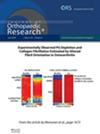Evaluation of the Baseplate Position and Screws in Reverse Total Shoulder Arthroplasty Using 3D Printed Patient-Specific Instrumentation
Abstract
Patient-specific instrumentation (PSI) in shoulder arthroplasty has been used to translate preoperative surgical planning into precise implant positioning. However, screws for baseplate fixation using PSI have not been preoperatively planned or verified for proper location and length. This study aims to assess the reproducibility of the 3D-printed PSI system for baseplate and screw positioning in reverse total shoulder arthroplasty (rTSA) and the role of preoperative screw planning. Postoperative CT data from 30 patients who underwent primary rTSA using PSI were collected. After ideal position planning of the baseplate and screws, a PSI guide was 3D-printed. Postoperative CT evaluated baseplate version, inclination, and translation. Screw length, insertion angle, and potential penetration of the spinoglenoid and suprascapular notch were investigated. The mean differences between planned and actual implantation were 2.7° ± 5.8° for version, 0.9° ± 3.5° for inclination, and 1.0° ± 5.4° for rotation. The mean translation difference was 1.7 ± 1.0 mm. The mean screw angulation differences were −0.5° ± 6.4° anteroposteriorly and −1.4° ± 7.1° superior-inferiorly. There was no risk of nerve injury from suprascapular notch involvement because it was considered that the screw was positioned away from the nerve path. The posterior screw was abandoned in 93.3% of patients due to proximity to the suprascapular nerve or insufficient length for bone purchase (mean length: 9.3 ± 2.0 mm). Using PSI, the reproducibility of baseplate and screw placement in rTSA was confirmed. The posterior screw has a limited role due to its length and direction constraints.
Clinical significance
Preoperative planning and PSI enable precise surgery, including proper screw insertion and baseplate positioning.


 求助内容:
求助内容: 应助结果提醒方式:
应助结果提醒方式:


